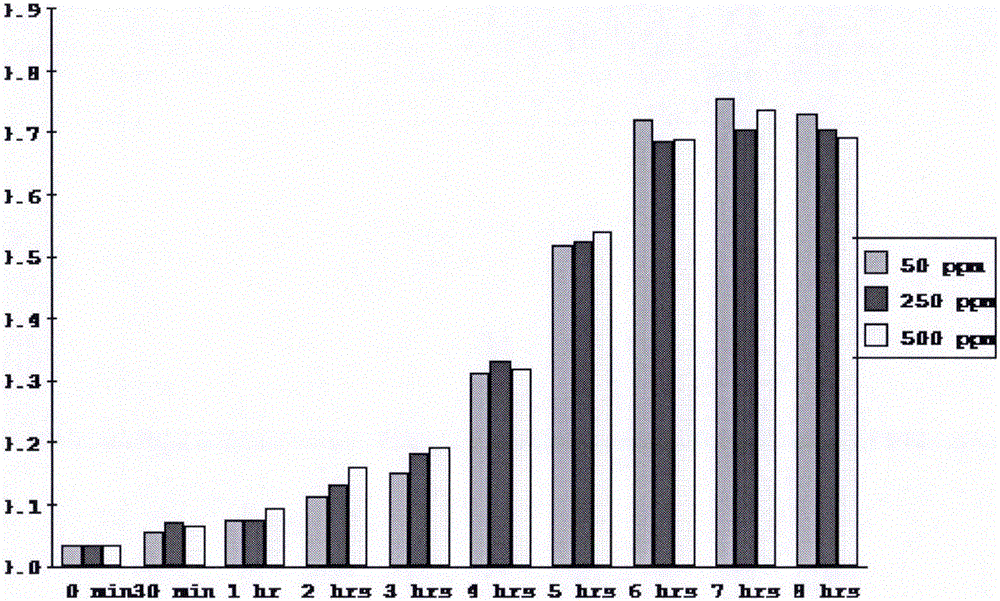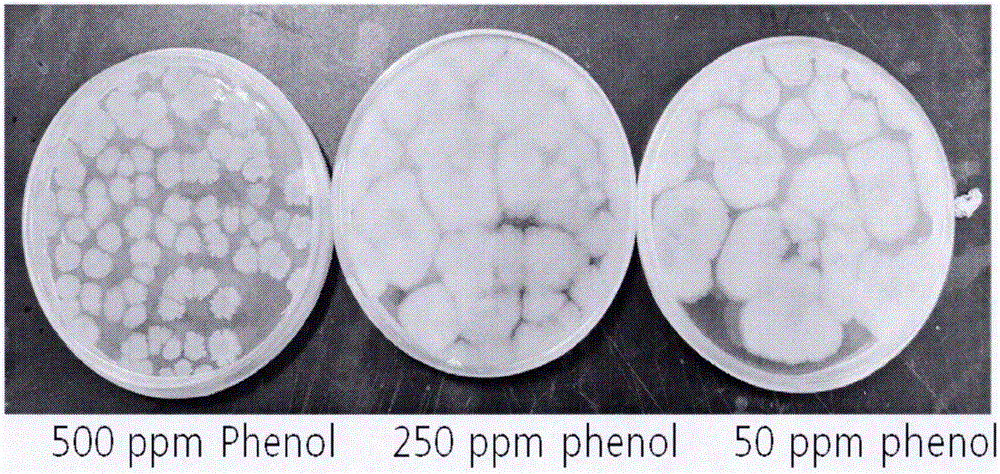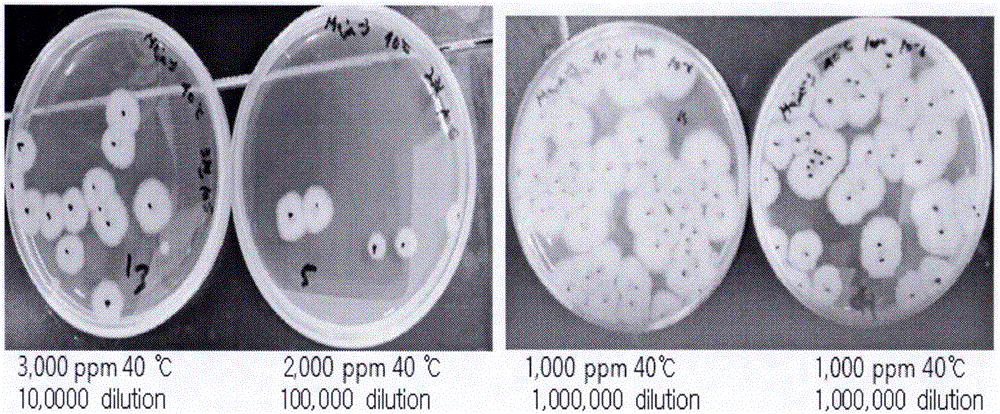Application of bacillus mojavensis KJS-3 to decomposition of phenol
A technology of bacillus and purpose, applied in the field of wastewater treatment, can solve the problems of decreased microbial activity, decreased wastewater treatment efficiency, low microbial efficiency, etc., and achieves the effect of improving decomposition ability
- Summary
- Abstract
- Description
- Claims
- Application Information
AI Technical Summary
Problems solved by technology
Method used
Image
Examples
Embodiment 1
[0015] The isolation of embodiment 1 bacterial strain
[0016] The viscous substances that mold cannot grow in the food waste were collected, moved to the laboratory, and cultivated in a shaker in tryptic soy agar medium (TSA) at 37°C for 16 hours. Here, the growing Colonies were inoculated in Trypticase Soy Broth Medium (TSB) for storage, and the grown strains were kept at 45°C and 20°C for culture, and then the strains grown out of the culture were selected and then kept .Store these selected strains at 4°C for 30 days, and then culture them again at 37°C in tryptic soy agar liquid medium (TSA). Two of the strains that had formed endospores (Endospore) in 7 days were selected, and the strains were named No. 3 and No. 4 strains respectively.
[0017] These strains were respectively entrusted to the Korea Microorganism Collection Center for genetic material analysis to obtain the Mojave Bacillus KJS-3 (Bacillus mojavensis KJS-3) and Mojave Bacillus KJS-4 (Bacillus mojavensis ...
Embodiment 2
[0018] Embodiment 2 has the confirmation of phenol decomposition ability
[0019] The above-mentioned two kinds of microorganisms, Bacillus mojavensis KJS-3 (Bacillus mojavensis KJS-3) and Bacillus mojavensis KJS-4 (Bacillus mojavensis KJS-4), were placed at a temperature of 40°C on tryptone soybean agar medium (TSA ) inoculation culture. This experiment was carried out using Bacillus mojavensis KJS-3 (Bacillus mojavensis KJS-3) cultured at 40°C.
[0020] 1. Inoculate the Bacillus Mojave KJS-3 strain in 10ml TSB medium, and culture at 40°C for more than 16 hours.
[0021] After culturing for 16 hours, take 5ml out of the culture solution, inoculate in 100ml TSB, and incubate at 40°C for 90 minutes, with the stirring speed kept at 100-200rpm.
[0022] 2. Take 500 μl (microliter) of the culture cultured in the above steps and centrifuge at 10,000 rpm for 1 minute to remove the supernatant, then inject 500 μl of normal saline (0.9% NaCl), mix completely and inoculate in minimal...
Embodiment 3
[0029] For the determination of the phenol content of the phenol-decomposing strain, the reaction experiment was carried out according to the following sequence, and the absorbance was measured at a wavelength of 650 nm.
[0030] 1) After the strain has been cultured for 8 hours, transfer the culture solution to the refrigerator for storage.
[0031] 2) Quantification of phenol
[0032] (1) Standard product preparation: 250ppm-phenol, 25ppm-phenol, 12.5ppm-phenol.
[0033] (2) Sample: 500ppm-phenol, containing a small amount of culture medium (cultivated at 40°C for 8 hours);
[0034] 250ppm-phenol contains a small amount of medium, and 50ppm-phenol contains a small amount of medium (cultivation at 40°C for 8 hours).
[0035] (3) Experimental process: 100ml of the standard substance and each sample were respectively taken, and 6ml of 8wt% K was added 3 Fe(CN) 6 , 6ml of 0.1M FeCl 3 (0.1M HCl as a solvent), after reacting for 5 minutes, the absorbance value (OD) was measur...
PUM
 Login to View More
Login to View More Abstract
Description
Claims
Application Information
 Login to View More
Login to View More - Generate Ideas
- Intellectual Property
- Life Sciences
- Materials
- Tech Scout
- Unparalleled Data Quality
- Higher Quality Content
- 60% Fewer Hallucinations
Browse by: Latest US Patents, China's latest patents, Technical Efficacy Thesaurus, Application Domain, Technology Topic, Popular Technical Reports.
© 2025 PatSnap. All rights reserved.Legal|Privacy policy|Modern Slavery Act Transparency Statement|Sitemap|About US| Contact US: help@patsnap.com



